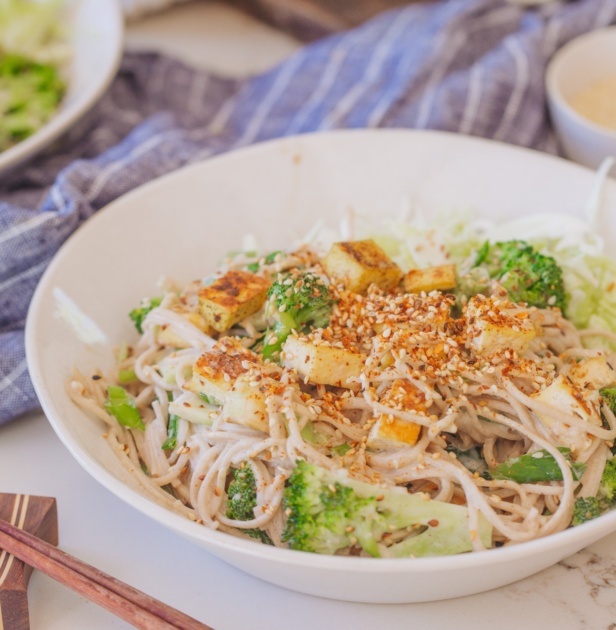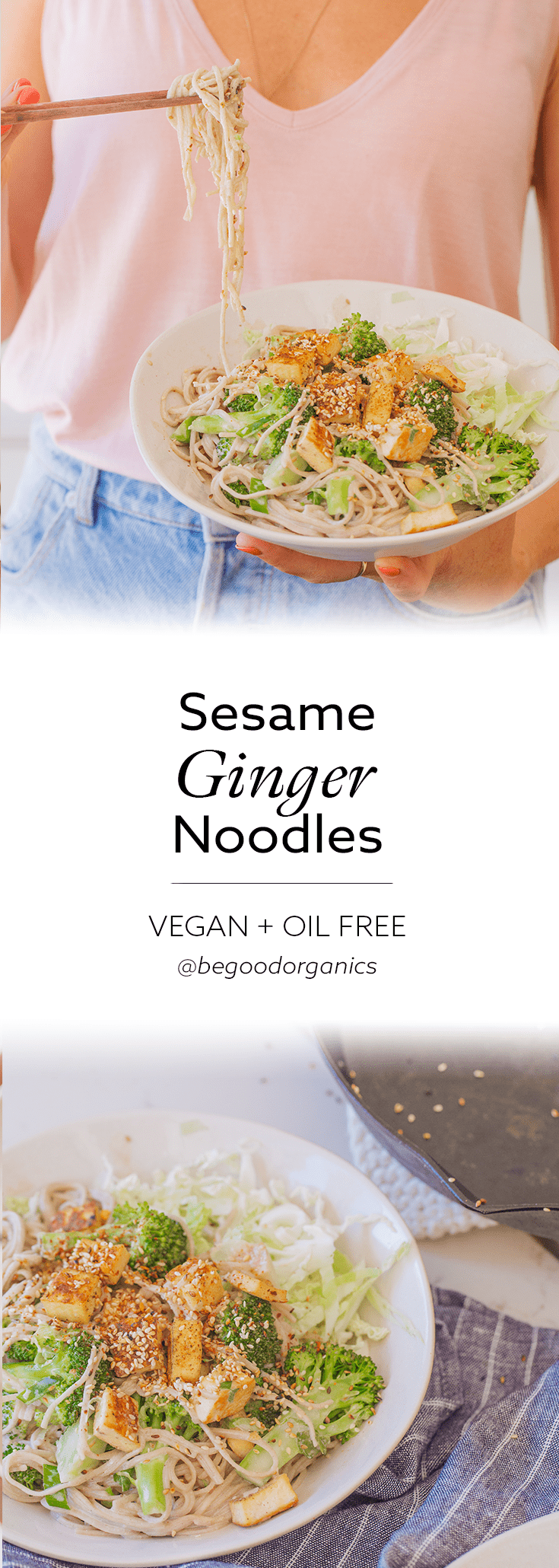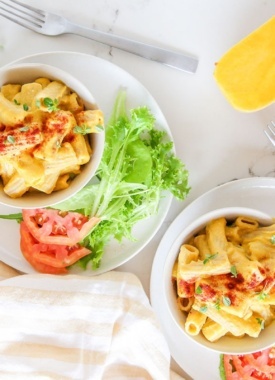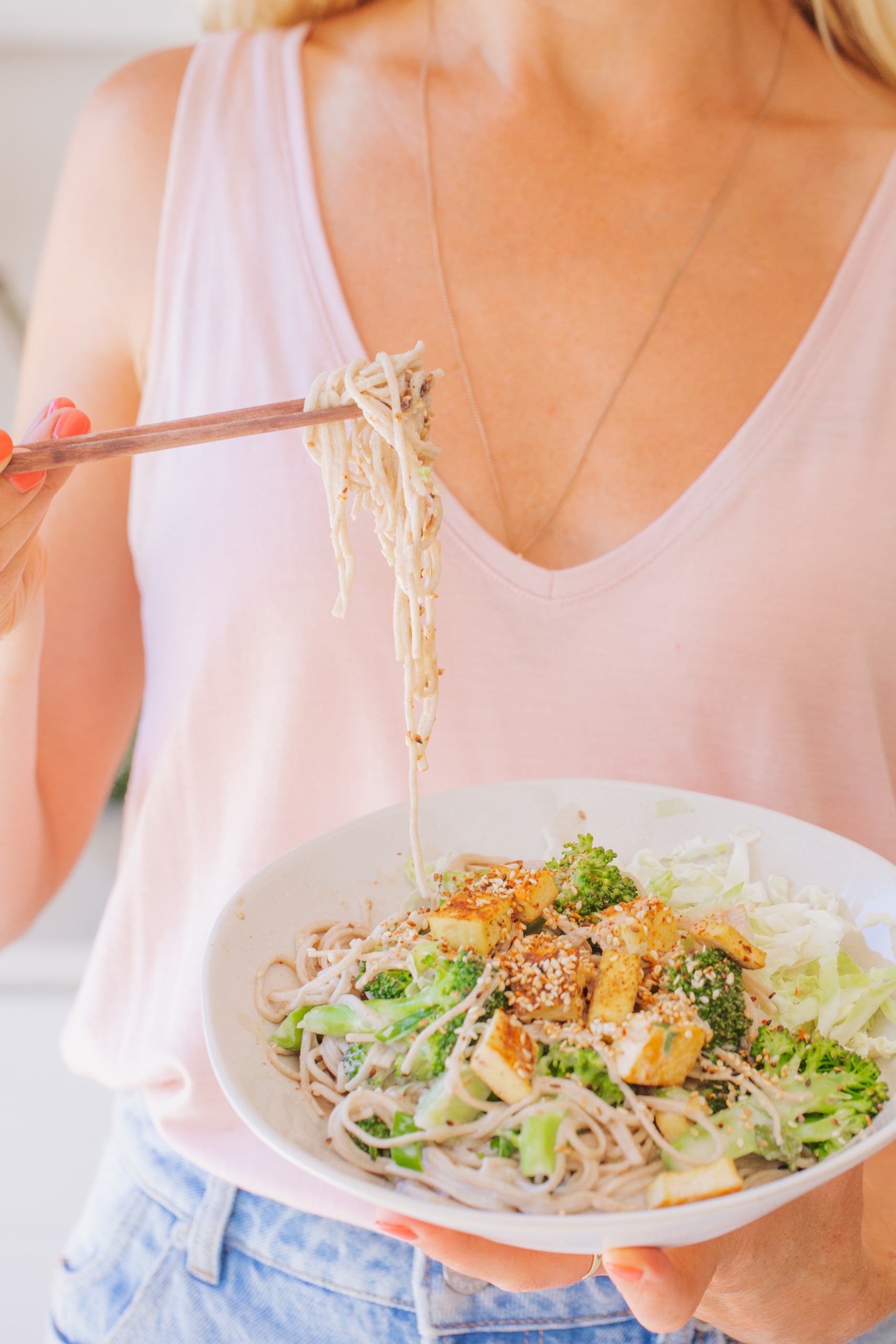
I’ve been making lots of bowl food the past few weeks. Simply, easy, 15 minute recipes that require not much more than a single pan. The brilliant thing about these is, you can easily customise them to whatever grains/noodles and veggies you’ve got on hand. I’ll teach you how to cook the delicious protein-rich topping and sauce, then you mix and match with whatever you’ve got in the fridge!
These Sesame Ginger Noodles are the perfect example. Literally just 10 ingredients, and the sesame ginger sauce is creamily good. Plus – I’m going to show you how to make my favourite crispy salt and pepper tofu, virtually oil free.
Imagine this…
- Cosy comforting noodles
- A creamy sesame sauce
- Fresh tender broccoli
- A hint of zesty ginger
- Infused with fragrant toasted sesame seeds
- & topped with the most amazing salt and pepper tofu
All you need is 1 pan, 1 pot, and 15 minutes. Grab the recipe below, then give them a whirl tonight!
Watch How To Make Sesame Ginger Noodles
Step-by-Step

1. boil broccoli and soba noodles

2. fry & season tofu
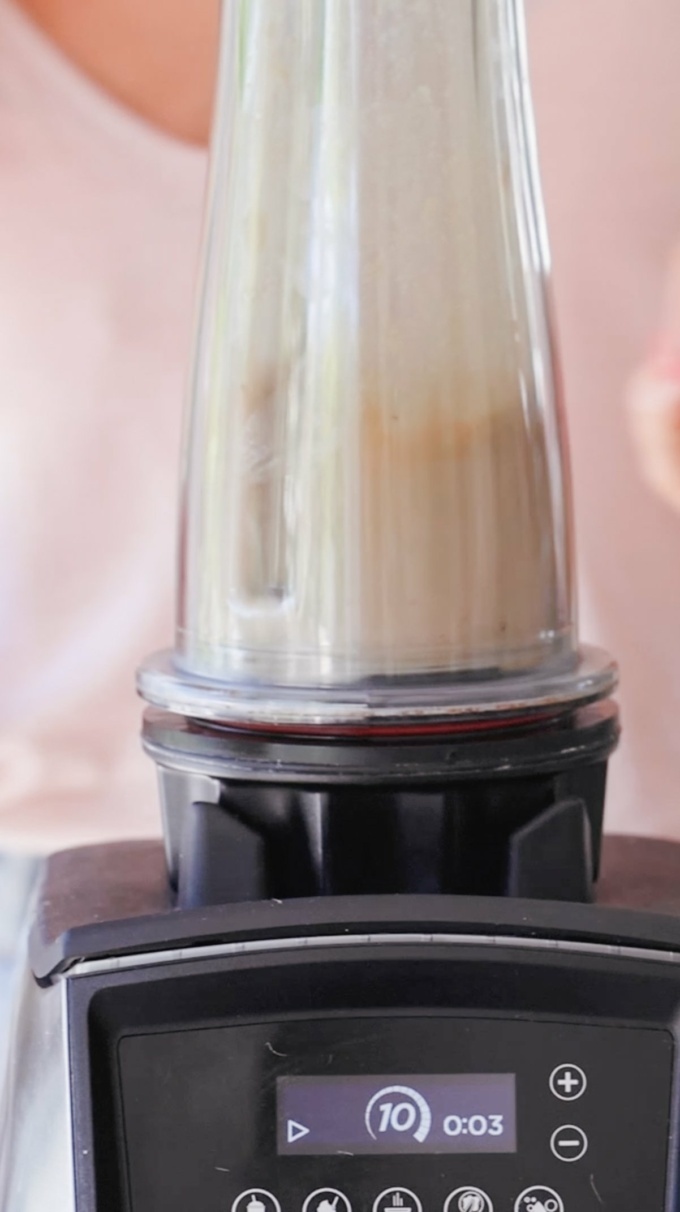
3. blend your dressing!
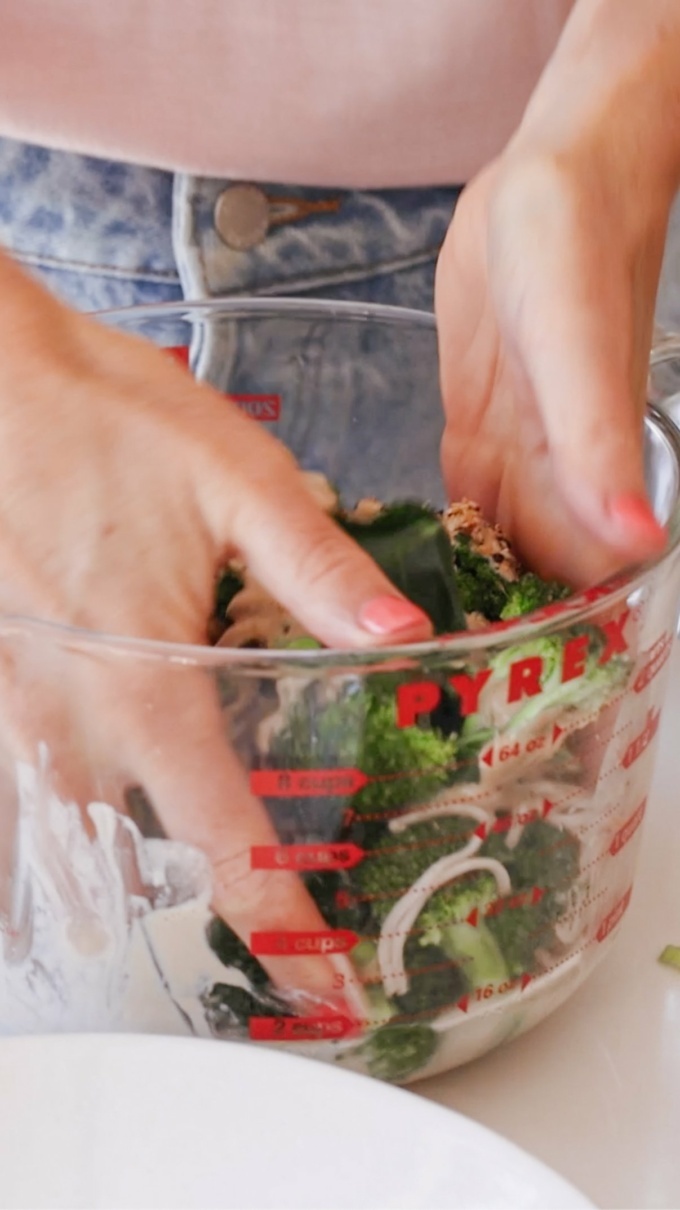
4. mix it all up!
Why Not Teflon Pans?
In this recipe, I’ve used cast iron to cook the tofu. But why not non-stick Teflon like we’re used to?
Most non-stick pans are made with a coating of polytetrafluoroethylene, or PTFE, commonly known as “Teflon”. It’s a clear polymer coat which prevents food from sticking, and makes them easy to wash. Problem is – the coating can chip and flake into food (especially if you get angry and give it a scrape with your metal spatula), and the PTFE can release harmful chemicals into your food when it’s heated.
In fact, several studies have shown that even when cooking at regular temperatures (180 to 260°C), PTFE coated pans begin to degrade and release toxic chemicals into your food. Some research even suggests that given this degradation, these pans should only be used for 3 years, before they cause serious harm. This process of toxic chemical release is enhanced even further if you scratch the pan before your 3 years up. Ingestion of these toxins into our food travels to the blood stream, can even be transferred from mother to infant in utero, and has been associated with reduced birth weight and abnormal thyroid function in children and adults.
Some newer Teflon pans use better quality materials, which are less likely to accumulate in the body, however they jury is still definitely still out on the long term effects.
Another problem is, these pans don’t degrade, which is a major environmental hazard. In New Zealand alone, over 100,000 non-stick Teflon style pans go to landfill every year. And that’s just in little Aotearoa.
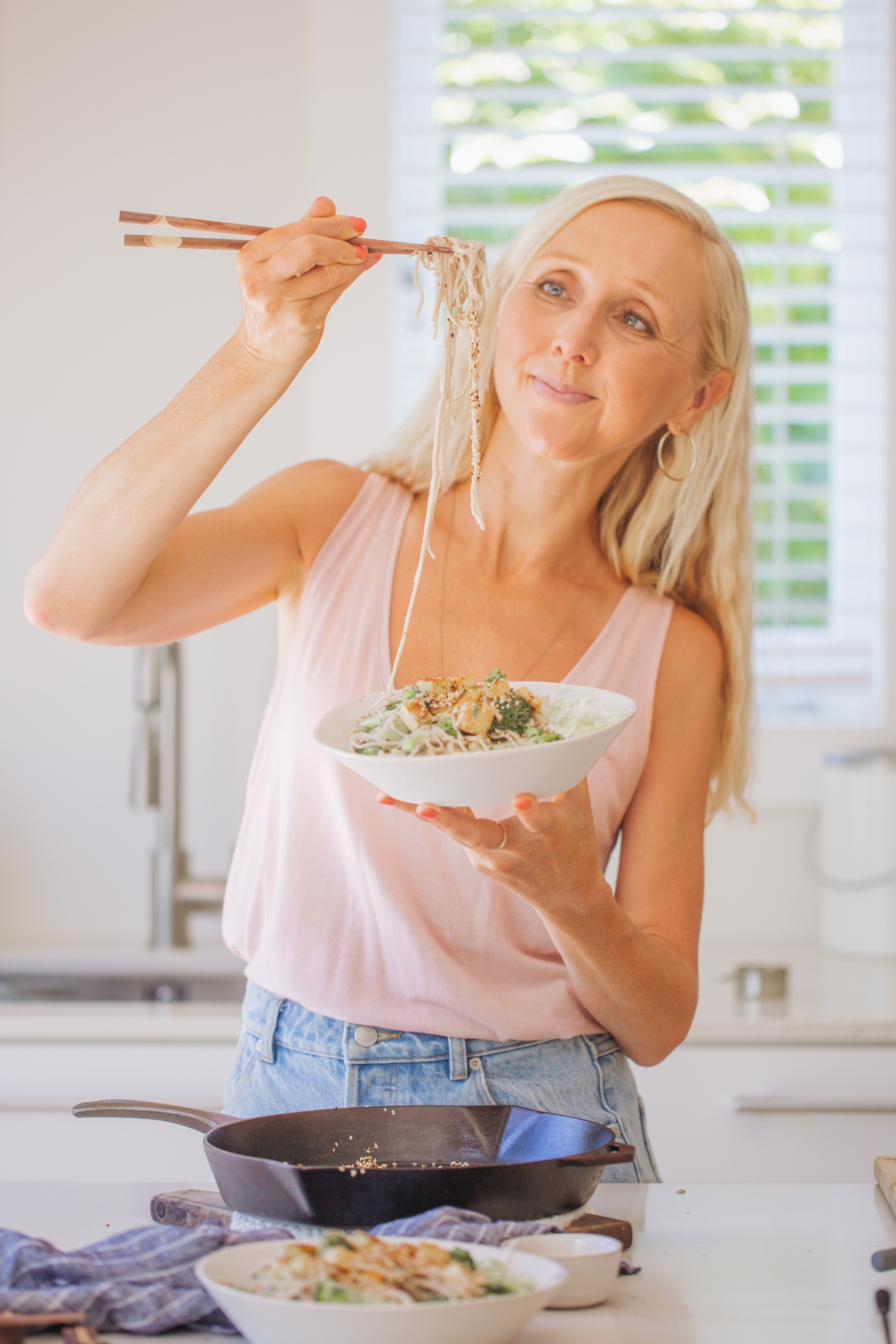
What Are The Safest Cookware?
So what are the safer alternatives? Getting back to basics and the cooking methods we used to use. In addition to these being safer for you from a toxin perspective, they also last much longer. In an era of disposable convenience, I’m a huge proponent of buying well, little, and for a lifetime.
Here’s what I recommend, and have shifted to over the last few years:
- Stainless – good for cooking rice/pasta/grains/legumes, sauces, and steaming veggies. Also baking pans for baking.
- Glass – a good alternative for baking brownies, slices, muesli bars, lasagnes.
- Cast Iron – perfect for pan-frying and searing tofu, tempeh, eggplant, mushrooms, baking frittatas, cooking stove-top bread (I make these Ugly Rolls in mine)
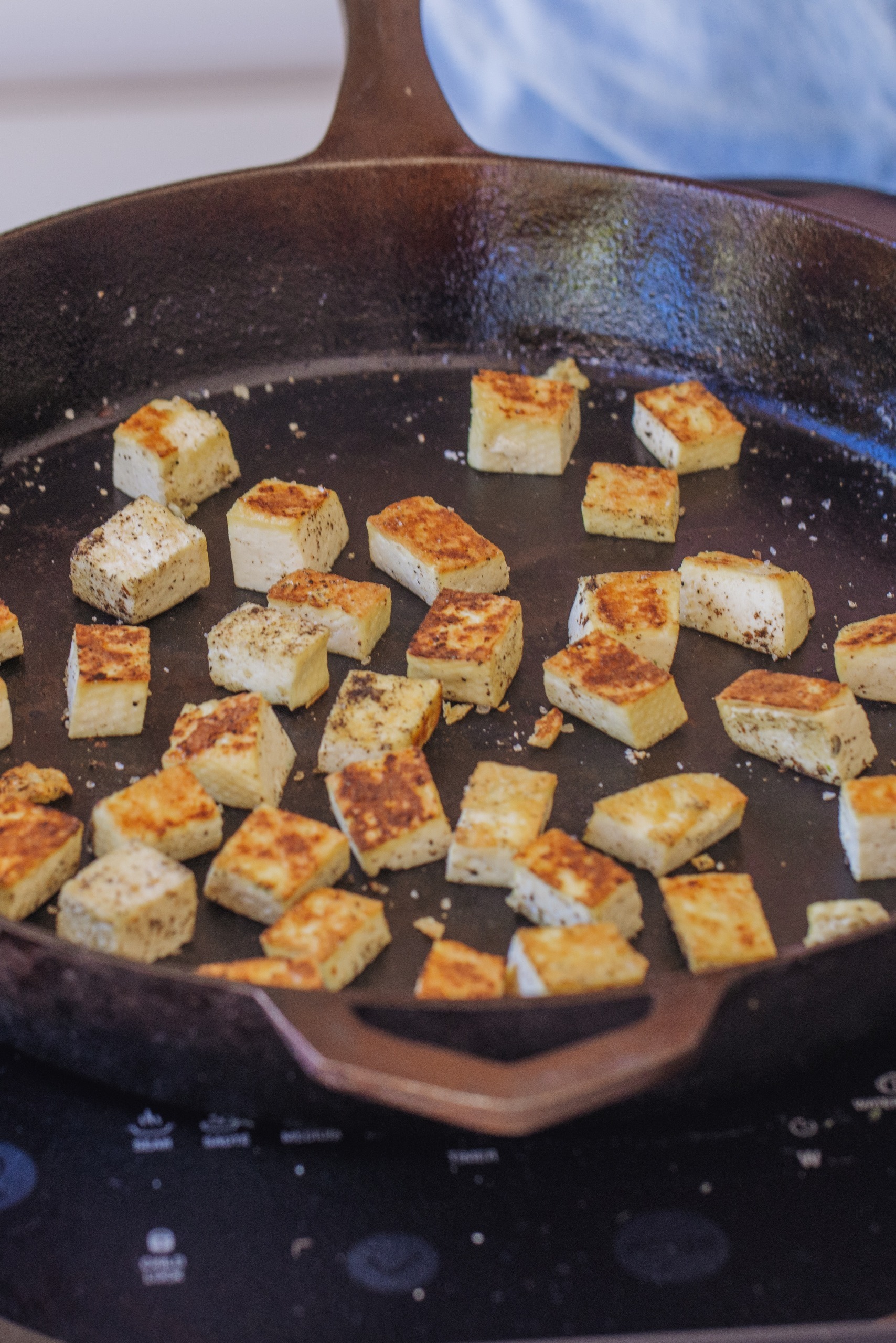
Benefits of Cast Iron
In this particular recipe, I’m showing you how brilliant the right cast iron pan can be at browning and searing things like tofu. I’ve tried a few cast iron pans, but my hands down favourite (and the brand who I’ve partnered with on this recipe) is Ironclad.
So what’s so good about cast iron? It’s…
- Been used for almost 2000 years
- Is a truly sustainable cookware, lasting 100+ years
- Can go from the stove top to oven so you can cook off a dish on the stove, then finish it or keep it warm in the oven (you can use them on your BBQ as well)
- Can actually impart iron into your food, increasing the iron content – which can be beneficial if you suffer from iron deficiency anaemia
- Retains an even heat, so you can turn it off but leave the food in so it continues to cook – this is perfect for the toasted sesame seeds in this recipe
- Over time, actually makes your food taste better
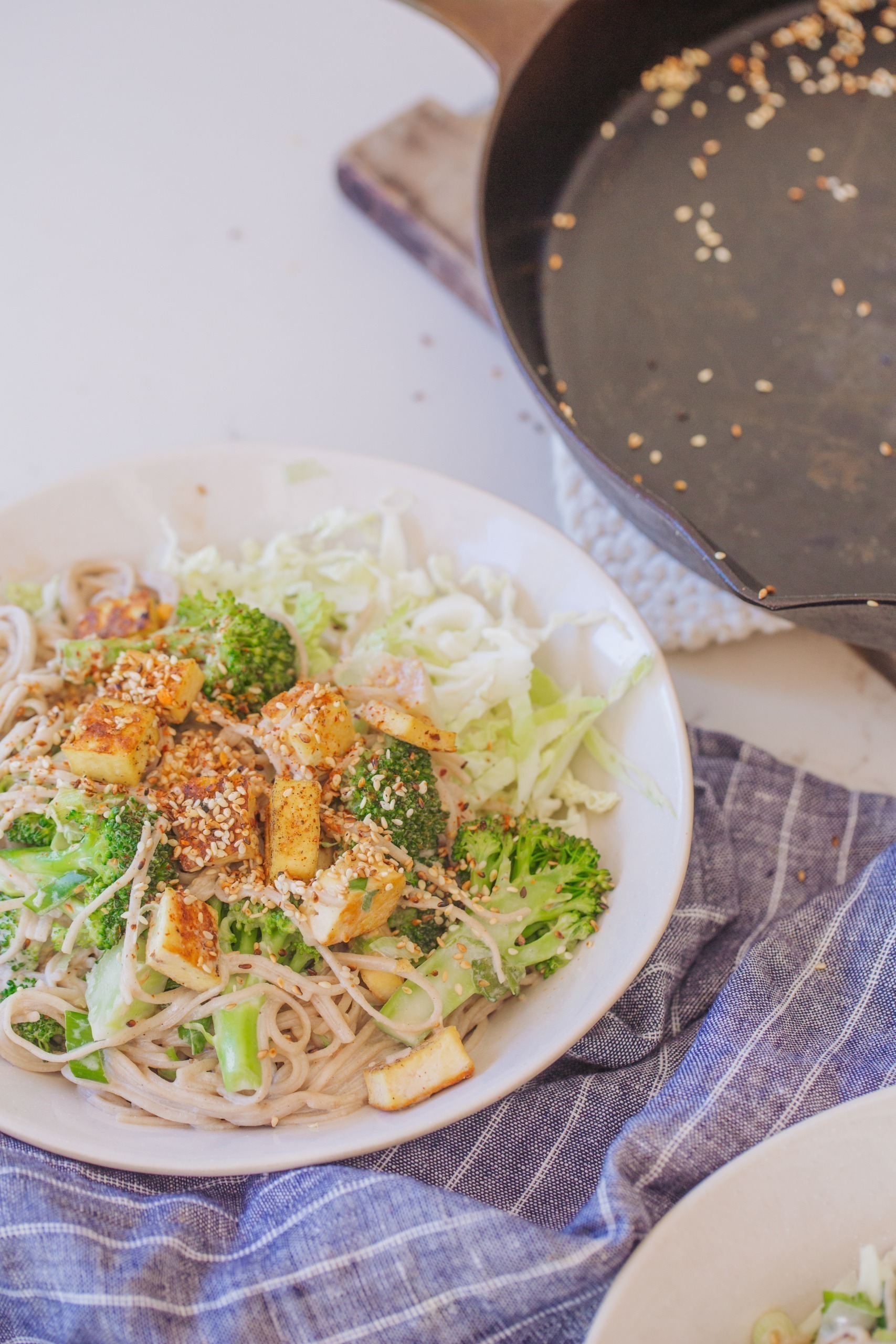
Why I Love My Ironclad?
I’ve had the benefit of being sent a few cast iron pans over the years to try, and can hands down say that my Ironclads are the best. Which is why I reached out to Joe and Kate (the kiwi founders of Ironclad) to see if they’d like to do a recipe collaboration together! Here’s what sets them above the rest:
- The only cast iron pan made locally in New Zealand
- Sustainably made with 100% recycled iron
- Comes unseasoned meaning no risk of chemicals, coatings or dyes
- Has a 100 year replacement guarantee (that’s 3 generations of use)
- And, is made by a small kiwi company, dedicated to changing the world of disposable chemical-laden cookware

How to Make Your Cast Iron Non-Stick
But is cast iron really non-stick? No was the answer in my mind until I got my Ironclads. However, if you prepare it properly, you can genuinely turn it into a natural non-stick pan – without the chemicals. Being able to fry tofu in it with virtually no added oil, was a revelation for this plant-loving passionado.
Here’s how to season it:
- Give it a quick scrub with natural detergent
- Dry it in an oven for 10 minutes so it’s really dry
- Rub it with vegetable oil with a cloth until shiny (grapeseed oil is ideal as it has a high smoke point and neutral flavour)
- Put it in the oven upside down for 1 hour at 180°C, then let it cool
After each use, I wash mine gently with cold water, let it completely dry (put it back into the warm oven if you used it to do this), then rub it again with vegetable oil (I don’t do the handle every time). The more you use it and season it, the better the non-stick surface becomes. That’s when you’ll be able to cook tofu to a perfect golden brown like I have here, with hardly any oil at all.
If you’re just starting out with cast iron, I recommend going for one large pan (mine is 25cm diameter). Then if you’re loving it, you can add a smaller pan – I recently got a smaller lighter 18cm which I’ve been loving for quick jobs like toasting nuts, seeds, and panfrying tofu and tempeh. Plus – the Ironclad team have given me a code for you to get $20 off – just use BUFFY20 at checkout here.
Give cast iron a try and let me know what you think! I’m an absolute convert, so know you will be too.
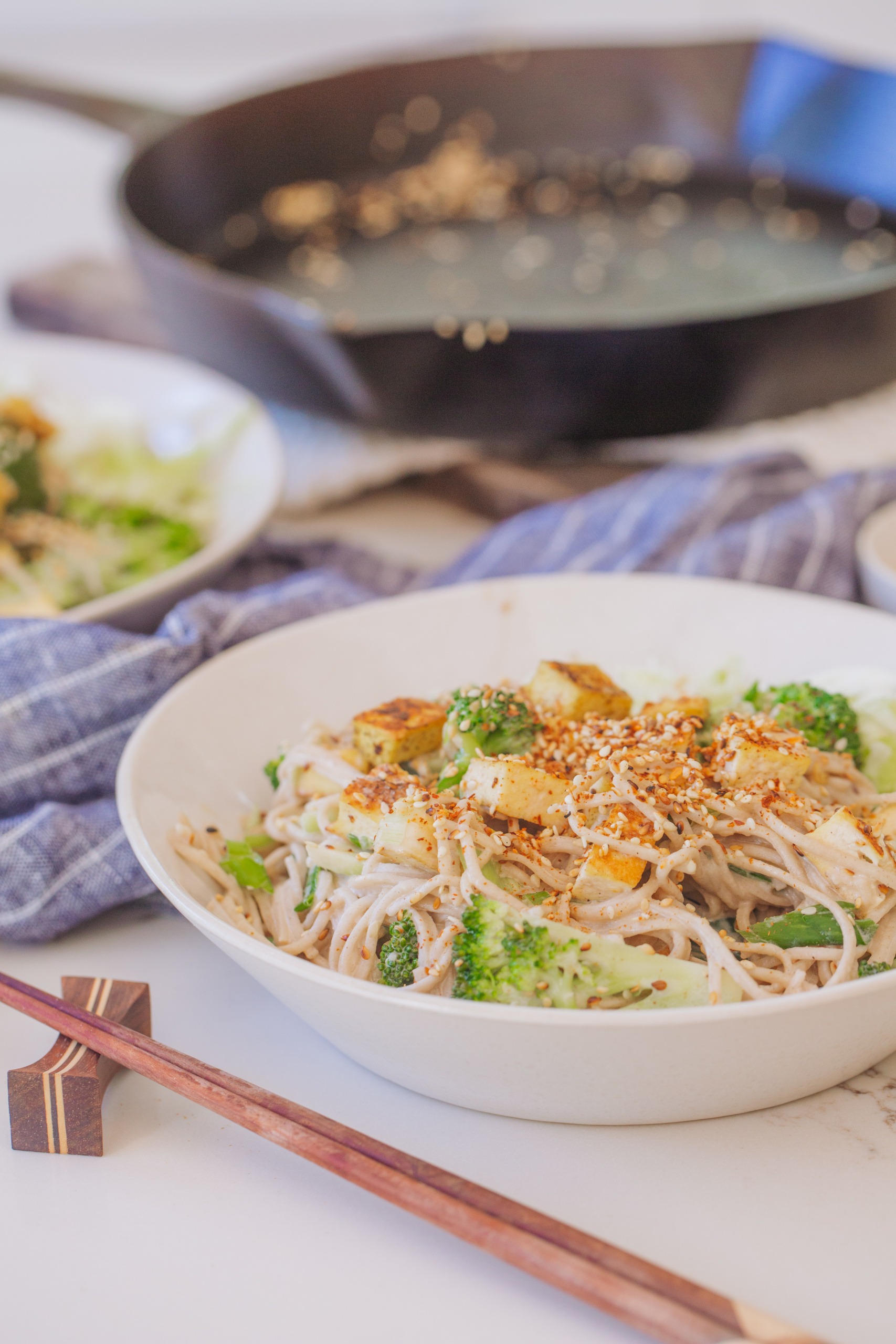
Want More One Pan Recipes? Try These
If you try these seriously delicious Sesame Ginger Noodles (and, give your tofu a whirl in a cast iron pan), let me know. Leave a comment and rating below, or tag me @begoodorganics in a photo of yours on Instagram. I love hearing how you get on with my recipes, and it inspires even more people to give them a try too!
PS. This recipe post has been made possible with the support of Ironclad, who are a company I’m super proud to support. Thank you for supporting the brands who help me keep Be Good Organics a thriving resource for you!


Ingredients
- 200 g soba noodles
- 2 broccoli incl peeled stem & leaves
- 300 g tofu cubed
- ½ tsp sea salt
- ¼ tsp ground black pepper
- ¼ c sesame seeds
- 2 spring onions
Sesame Ginger Sauce
- 4 tbsp tahini
- 2 tbsp tamari
- 2 tbsp brown rice vinegar or apple cider vinegar
- 2 cloves garlic
- 2 cm ginger root
- 1 date
- 1 tsp sea salt
- ½ c pasta/broccoli cooking water
To serve
- red chilli flakes
Instructions
- Boil a jug of water, then add to a pot with the soba noodles and begin cooking.
- Cut the broccoli into small florets, including the leaves and peeled diagonally sliced stem. Add on top of the noodles half way through cooking, and put the lid on to finish.
- Meanwhile, panfry the tofu (in a little oil if needed, but if your pan is well seasoned, you wont). Sprinkle with salt and pepper, and cook a few minutes on each side until brown and crispy. Add the sesame seeds to the pan for the final minute to toast them also (if you're using cast iron, turn off the pan when you add them as it retains enough heat to toast them when off).
- Drain and reserve the water from the broccoli and noodles, then rinse. Blend the sesame sauce ingredients in a blender until smooth and creamy, then add back to the broccoli and noodles, along with the tofu, sesame seeds, and spring onions (reserving a little of each to garnish). Mix gently to combine, season to taste with extra salt and pepper as desired.
- Serve in bowls garnished with reserved tofu, sesame seeds, and spring onions, and some red chilli flakes. Will keep for 5 days in the fridge.
Recipe Notes
- Gluten free: Choose 100% buckwheat soba noodles, as most brands are actually 50% wheat flour and thus not gluten free. Or use another gluten free noodle such as brown rice or sorghum noodles.

